| EMDR and Mourning by Joany Spierings. | Paperback | |
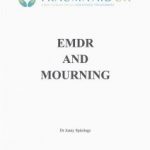 |
First class summary by Dutch senior EMDR trainer Joany Spierings of the nature and quality of bereavement, and how EMDR can be used to address the pain of loss that has become stuck and facilitate the process of healthy grieving. |
|
| Purchase | ||
|
|
||
| EMDR Case Formulation: Principles, Forms, Scripts & Worksheets. | Paperback | |
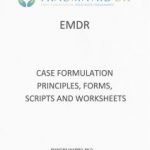 |
Direct from Francine Shapiro herself, outlines and summarises in simple, direct language how EMDR is best applied, all the way through the three prongs and the eight stages. Greatly prized by newcomers still getting used to the protocol, but invaluable too for older hands concerned to keep their practise sharp. |
|
| Purchase | ||
|
|
||
| EMDR Case Formulation Tool – Journal article. | Digital-PDF | |
|
This is a diagrammatic clinical tool to be used when formulating cases in eye movement desensitization and reprocessing (EMDR) therapy. Based on the Adaptive Information Processing (AIP) model, the EMDR Case Formulation Tool is a way of illustrating psychological difficulties, mapping out the relationships between six key elements: unprocessed traumatic experiences, triggers, intrusions, negative beliefs, and symptoms, as well as resilience. From the diagrammatic formulation, a narrative formulation can be developed. The case formulation tool can be shared with the client, used to guide treatment planning, in supervision, and in case consultations Please make your donation using the orange Donate button on the left before downloading; we suggest a donation of £5. You will then be returned to this page to use the green Journal button to download the pack. This is a journal article which explains the Case Formulation Tool in detail. |
||
|
|
||
| EMDR Case Formulation Tool – Version 2. | Digital-PDF | |
|
There is a version of the Case Formulation Tool in pdf format – this can be printed and used with clients. Please make your donation using the orange Donate button on the left before downloading; we suggest a donation of £5. You will then be returned to this page to use the green Tool PDF button to download the pack. |
||
|
|
||
| EMDR Case Formulation Tool – Version 2. | Digital-Word | |
|
There is a Case Formulation Tool in Word format which can be used online and with clients; it has boxes into which information can be typed in a live environment. Please make your donation using the orange Donate button on the left before downloading; we suggest a donation of £5. You will then be returned to this page to use the green Tool Word button to download the pack. |
||
|
|
||
| EMDR Consultants Resources Book, 2nd Edition (PAPERBACK) by Robin Logie (Editor). | Paperback | |
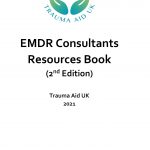 |
A completely revised second edition including a wealth of new information. Includes articles on case formulation, completing supervisees’ accreditation forms, applying supervision theory to the process of EMDR supervision as well as new checklists, a sample supervision contract and the introduction to the recently published NHS Competency Framework for EMDR. |
|
| Purchase | ||
|
|
||
| EMDR Consultants Resources Book, 2nd Edition (DIGITAL DOWNLOAD) by Robin Logie (Editor). | Digital-PDF | |
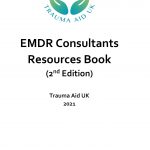 |
A completely revised second edition including a wealth of new information. Includes articles on case formulation, completing supervisees’ accreditation forms, applying supervision theory to the process of EMDR supervision as well as new checklists, a sample supervision contract and the introduction to the recently published NHS Competency Framework for EMDR. |
|
|
|
||
| EMDR Handbook for Clients. | Digital-PDF | |
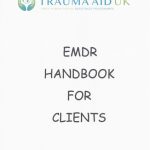 |
A summary to hand to clients starting EMDR therapy. It sets out how it works, how it’s applied and with space for clients to capture their keystone memories, the associated cognitions and track their own progress. Please make your donation using the orange Donate button on the left before downloading; we suggest a donation of £5. You will then be returned to this page to use the green After Donation button to download the handbook. |
|
|
|
||
| EMDR Protocol Pad. | Pad | |
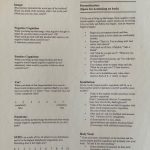 |
Possibly Trauma Aid UK’s best-seller and a useful summary of the entire basic EMDR protocol on one side of A4, in two columns on a big pad, a new sheet for each target, guiding you through the steps in order, with space to make notes. Especially valuable for therapists starting out on EMDR. |
|
| Purchase | ||
|
|
||
| Using stories in EMDR by Robin Logie, Mark Bowers, Alexandra Dent, Jo Elliott, Mike O’Connor, Ali Russell. | Paperback | |
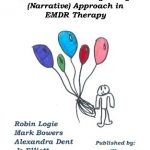 |
Using Stories in EMDR is a comprehensive guide to the incorporation of storytelling into the practice of Eye Movement Desensitisation and Reprocessing (EMDR) Therapy. Based on the work of Joan Lovett, the book provides a theoretical background and context for the use of storytelling before describing a detailed step-by-step guide to this approach. The book includes five detailed case studies based on the work of the authors. The authors are four clinical psychologists and two educational psychologists with extensive experience of using EMDR with children, particularly the storytelling approach. |
|
| Purchase | ||
|
|
||
| VOCs SUDs Children’s Version. | Laminated-Sheet | |
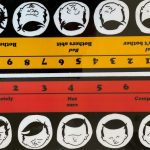 |
A4 size. One side shows the SUD and VOC in visual form illustrated by a series of facial expressions. Client is asked to point to place on scale that represents their SUD or VOC. Reverse side shows list of common Negative and Positive Cognitions suitable for children to choose from. |
|
| Purchase | ||
|
|
||
| VOCs SUDs Adult’s Version. | Laminated-Sheet | |
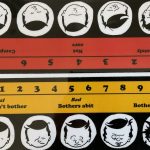 |
A4 size. One side shows the SUD and VOC in visual form illustrated by a series of facial expressions. Client is asked to point to place on scale that represents their SUD or VOC. Reverse side shows list of common Negative and Positive Cognitions for client to choose from. |
|
| Purchase | ||
|
|
||
| Enhancing EMDR clinical supervision through the utilisation of an EMDR process model of supervision and an EMDR personal development action plan by Derek Farrell, Paul Keenan, Lorraine Knibbs and Tim Jones. | Digital-PDF | |
|
Abstract: EMDR Clinical Supervision offers the opportunity for the EMDR Supervisee to engage in a number of important aspects in relation to exploring their EMDR practice and professional development. This paper will outline models of clinical supervision and how they relate to EMDR. It will propose an EMDR Clinical Supervision Process Model that captures both the micro and macro elements of EMDR as an eight-phase psychological treatment intervention for psychological trauma. An EMDR Personal Development Action Plan (EMDR PDAP) will also outline how this could be incorporated within EMDR clinical supervision in the promotion of theory and practice integration in EMDR. Although the paper will focus upon the EMDR Europe Practitioner Competency Framework the implications for enhancing EMDR clinical supervision apply to EMDR clinicians internationally. |
||
|
|
||
| Instructions for clinical practice articles. | Digital-PDF | |
|
An article from the Journal of EMDR |
||
|
|
||
| EMDR Supervision Case Presentation Template. | Digital-PDF | |
|
|
||
| Case Study Paper Outline. | Digital-PDF | |
|
An article from the Journal of EMDR. |
||
|
|
||